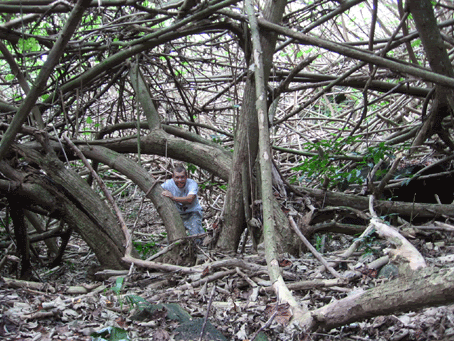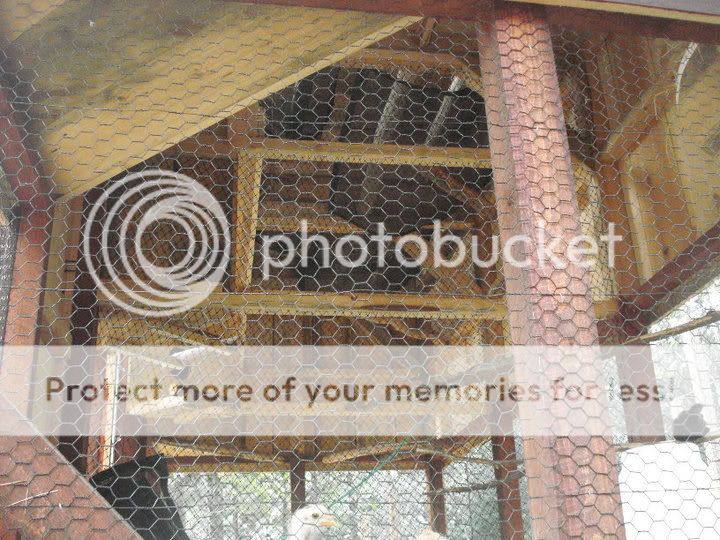I will definatly use some of your suggestions as we build my new chicken house. We've already begun working on a "tower" for the guinea pair.
Navigation
Install the app
How to install the app on iOS
Follow along with the video below to see how to install our site as a web app on your home screen.
Note: This feature may not be available in some browsers.
More options
You are using an out of date browser. It may not display this or other websites correctly.
You should upgrade or use an alternative browser.
You should upgrade or use an alternative browser.
Getting Ready For Winter
- Thread starter Resolution
- Start date
- Thread starter
- #12
Something I really forgot to add to this- its time to collect up every bag of DRY leaves you can get your hands on. Store these bags in a completely dry location.
Dry leaves are arguably superior to all other forms of bedding. Think about the tannins and antioxidants, the fibre, trace minerals locked up in these leaves- and as they relate to the natural environment -the ecology of your localized region- see what a great contribution dry deciduous leaves can make?
Don't forget your Poop Hammocks please- with the addition of this preventative tool - ( and thank you Robert DuGrenier, Cabbage Hill Farm and Michelle for creating the impetus for the contraption; and providing the descriptive name) one can keep adding to the dense layers of leaves blanketing the floor of the winter shelter enclosure while helping prevent the contamination of the birds legs and plumage - preventing against - contact with their feces.
THANKS TO YOU TAMIYM AND PLYMOUTH COLONY FARM for illustrating the principles so ably both in construction of the design and photo documentation of different examples of ideal poultry cotes.
Dry leaves are arguably superior to all other forms of bedding. Think about the tannins and antioxidants, the fibre, trace minerals locked up in these leaves- and as they relate to the natural environment -the ecology of your localized region- see what a great contribution dry deciduous leaves can make?
Don't forget your Poop Hammocks please- with the addition of this preventative tool - ( and thank you Robert DuGrenier, Cabbage Hill Farm and Michelle for creating the impetus for the contraption; and providing the descriptive name) one can keep adding to the dense layers of leaves blanketing the floor of the winter shelter enclosure while helping prevent the contamination of the birds legs and plumage - preventing against - contact with their feces.
THANKS TO YOU TAMIYM AND PLYMOUTH COLONY FARM for illustrating the principles so ably both in construction of the design and photo documentation of different examples of ideal poultry cotes.
- Thread starter
- #14

Last edited:
- Thread starter
- #15
Quote:
I saw on one of your posts the poop hammock...it appears you are using suncloth with a tarp inside of the suncloth for removal & cleaning of the feces? Is that correct?
affirmative but what happened with the logical question thread? Never mind- someone jumped from this thread to another thread- too many windows open.
I saw on one of your posts the poop hammock...it appears you are using suncloth with a tarp inside of the suncloth for removal & cleaning of the feces? Is that correct?
affirmative but what happened with the logical question thread? Never mind- someone jumped from this thread to another thread- too many windows open.
Last edited:
Quote:
I saw on one of your posts the poop hammock...it appears you are using suncloth with a tarp inside of the suncloth for removal & cleaning of the feces? Is that correct?
affirmative but what happened with the logical question thread?
Not quite sure your question here...you started this thread over a month ago and I have been following and asked you the poop hammock question over a month ago and you did not answer...you mention areas in which we should improve but then it would appear as if you feel we are stupid perhaps for confirming... perhaps you are far too superior for some of us to approach with our lowly knowledge of poultry. Won't make the mistake again.
I saw on one of your posts the poop hammock...it appears you are using suncloth with a tarp inside of the suncloth for removal & cleaning of the feces? Is that correct?
affirmative but what happened with the logical question thread?
Not quite sure your question here...you started this thread over a month ago and I have been following and asked you the poop hammock question over a month ago and you did not answer...you mention areas in which we should improve but then it would appear as if you feel we are stupid perhaps for confirming... perhaps you are far too superior for some of us to approach with our lowly knowledge of poultry. Won't make the mistake again.
Last edited:
Quote:
affirmative but what happened with the logical question thread?
Not quite sure your question here...you started this thread over a month ago and I have been following and asked you the poop hammock question over a month ago and you did not answer...you mention areas in which we should improve but then it would appear as if you feel we are stupid perhaps for confirming... perhaps you are far too superior for some of us to approach with our lowly knowledge of poultry. Won't make the mistake again.
You were obviously born knowing all...lucky for you.
affirmative but what happened with the logical question thread?
Not quite sure your question here...you started this thread over a month ago and I have been following and asked you the poop hammock question over a month ago and you did not answer...you mention areas in which we should improve but then it would appear as if you feel we are stupid perhaps for confirming... perhaps you are far too superior for some of us to approach with our lowly knowledge of poultry. Won't make the mistake again.
You were obviously born knowing all...lucky for you.
- Thread starter
- #18
Quote:
Not quite sure your question here...you started this thread over a month ago and I have been following and asked you the poop hammock question over a month ago and you did not answer...you mention areas in which we should improve but then it would appear as if you feel we are stupid perhaps for confirming... perhaps you are far too superior for some of us to approach with our lowly knowledge of poultry. Won't make the mistake again.
You were obviously born knowing all...lucky for you.

?
I was referring to this logical question thread , which I assumed had been moderated out. This is due to the fact that I have too many windows open on my computer- that and the fact that I am a bit distracted with with work from my other real life.
No more coffee for you ChurchX3 !
p.s. I apologise for not answering your query. In the future, If I FAIL to answer a question just write me a personal note and remind me of that fact.
peaz
Not quite sure your question here...you started this thread over a month ago and I have been following and asked you the poop hammock question over a month ago and you did not answer...you mention areas in which we should improve but then it would appear as if you feel we are stupid perhaps for confirming... perhaps you are far too superior for some of us to approach with our lowly knowledge of poultry. Won't make the mistake again.
You were obviously born knowing all...lucky for you.

?
I was referring to this logical question thread , which I assumed had been moderated out. This is due to the fact that I have too many windows open on my computer- that and the fact that I am a bit distracted with with work from my other real life.
No more coffee for you ChurchX3 !
p.s. I apologise for not answering your query. In the future, If I FAIL to answer a question just write me a personal note and remind me of that fact.
peaz
Last edited:
I have to ask--why do you feel it is so important to get the feed off the ground? Birds (and chickens) throughout time have foraged the ground.
Bugs, worms whatever they could find. Can you help me understand why you feel so strongly about the food being up. Thanks!
Bugs, worms whatever they could find. Can you help me understand why you feel so strongly about the food being up. Thanks!
- Thread starter
- #20
Quote:

It's primarily an issue of fecal/dander contamination. The closer the food is to the ground, the more likely it is to come into contact with environmental dust generated from the more or less strictly terrestrial activities like rake scratching and bill digging. Dander is of course largely deposited from nocturnal perches. Adding feed particulates to that mix is enhancing the environment for potentially deleterious bacterium.
Secondly, a feeding table helps make an enclosure more complex- more behaviorally stimulating while also obliging hens into more activity-
Birds breath through their bones to some extent and the more activity they have ( above the heavier dust layer ) the better.
Another challenge that leads me to this solution is my own ergonomic issues- namely- I know that I've got to keep these feeding areas clean enough for my family to eat off of.
If I have to bend down all the time I may get lazy from time to time (nevermind when you leave these chores to someone else with less conviction or concept). If I'm not looking directly at the waterers I may not appreciate how filthy they've become.
On that note, I find that any health problems are more immediately recognizable when the birds have to fly or jump up to a feeding station. I'm looking directly at them at waist or eye level-rather than looming over them.
You may find as well that territories are not so well demarcated on feeding tables as chickens tend to be more territorial over ground space than mid elevation tables and high elevation roosts.
Lastly, a feeding table creates more physical space, that is, the surface area that the birds can actually use- this basically increases the % of room the birds have to live in- something particularly useful during long winter months.

It's primarily an issue of fecal/dander contamination. The closer the food is to the ground, the more likely it is to come into contact with environmental dust generated from the more or less strictly terrestrial activities like rake scratching and bill digging. Dander is of course largely deposited from nocturnal perches. Adding feed particulates to that mix is enhancing the environment for potentially deleterious bacterium.
Secondly, a feeding table helps make an enclosure more complex- more behaviorally stimulating while also obliging hens into more activity-
Birds breath through their bones to some extent and the more activity they have ( above the heavier dust layer ) the better.
Another challenge that leads me to this solution is my own ergonomic issues- namely- I know that I've got to keep these feeding areas clean enough for my family to eat off of.
If I have to bend down all the time I may get lazy from time to time (nevermind when you leave these chores to someone else with less conviction or concept). If I'm not looking directly at the waterers I may not appreciate how filthy they've become.
On that note, I find that any health problems are more immediately recognizable when the birds have to fly or jump up to a feeding station. I'm looking directly at them at waist or eye level-rather than looming over them.
You may find as well that territories are not so well demarcated on feeding tables as chickens tend to be more territorial over ground space than mid elevation tables and high elevation roosts.
Lastly, a feeding table creates more physical space, that is, the surface area that the birds can actually use- this basically increases the % of room the birds have to live in- something particularly useful during long winter months.
Last edited:
New posts New threads Active threads
-
Latest threads
-
Limping dutch bantam hen 10 months old
- Started by Cvanruss
- Replies: 0
-
-
Winterizing Run Question help
- Started by IowaCHKN
- Replies: 2
-
-
-
-
Threads with more replies in the last 15 days
-
-
-
-
Vent gleet/prolapse/abscess? What am I missing
- Started by FreshObsessed
- Replies: 47
-
-
×

